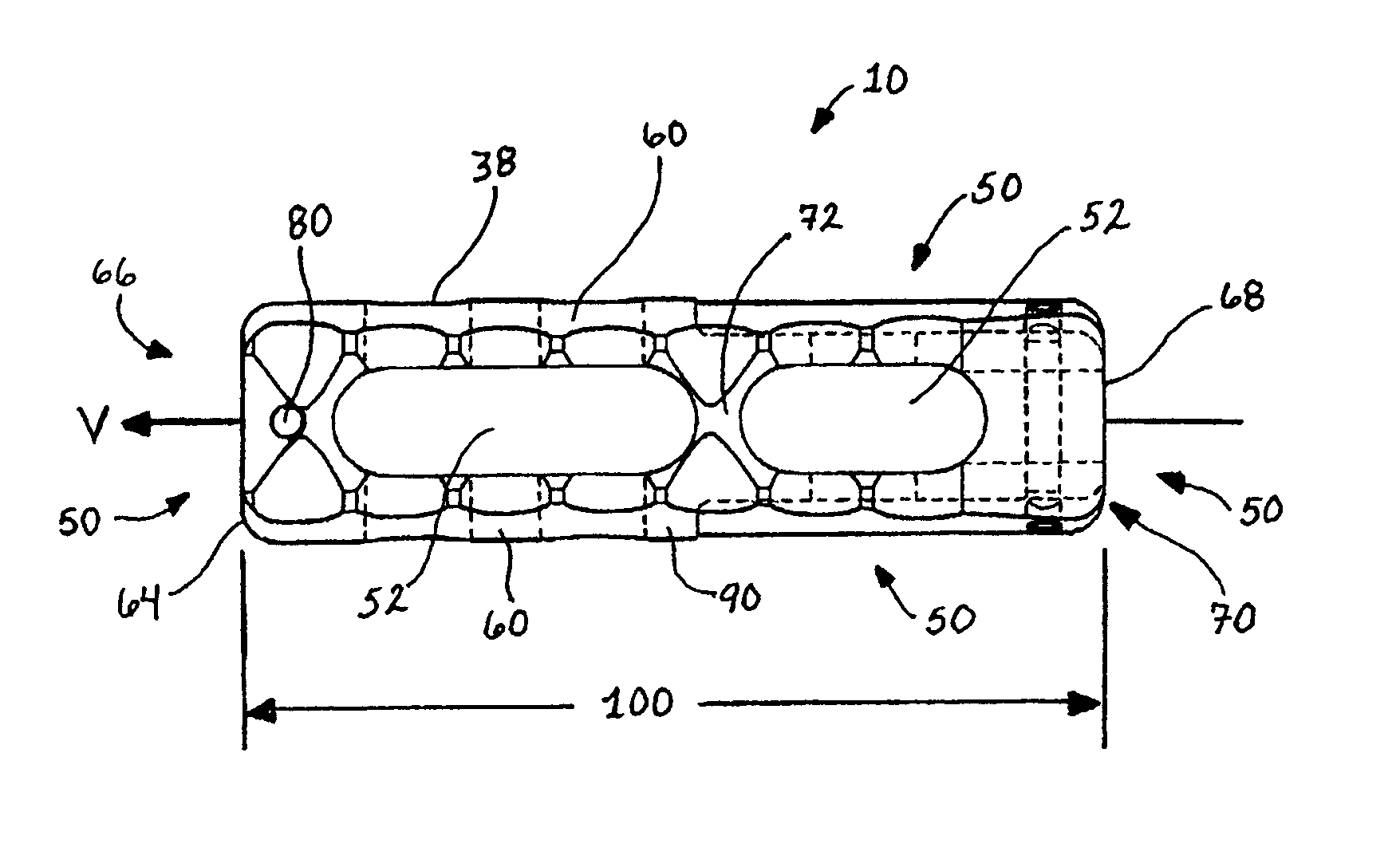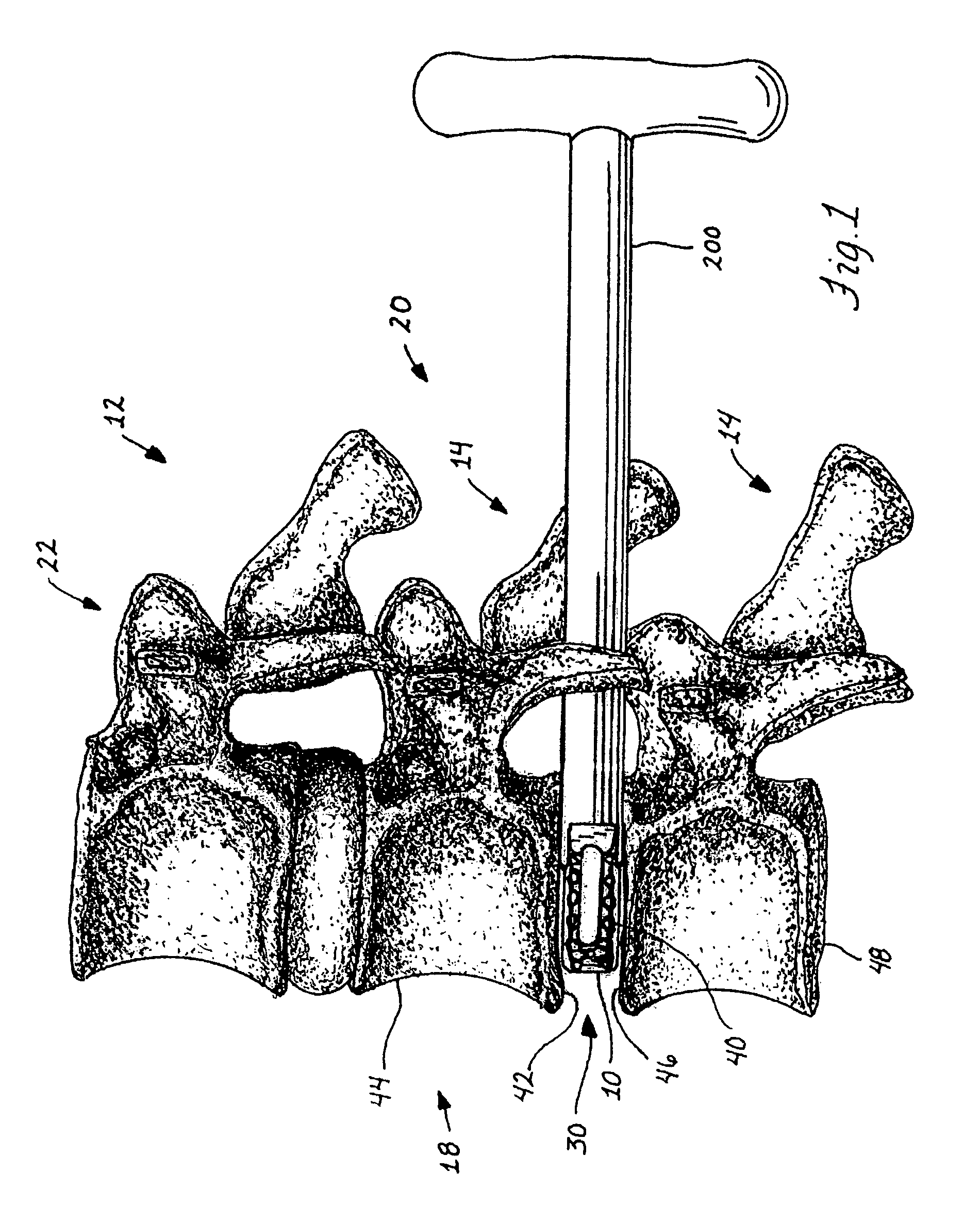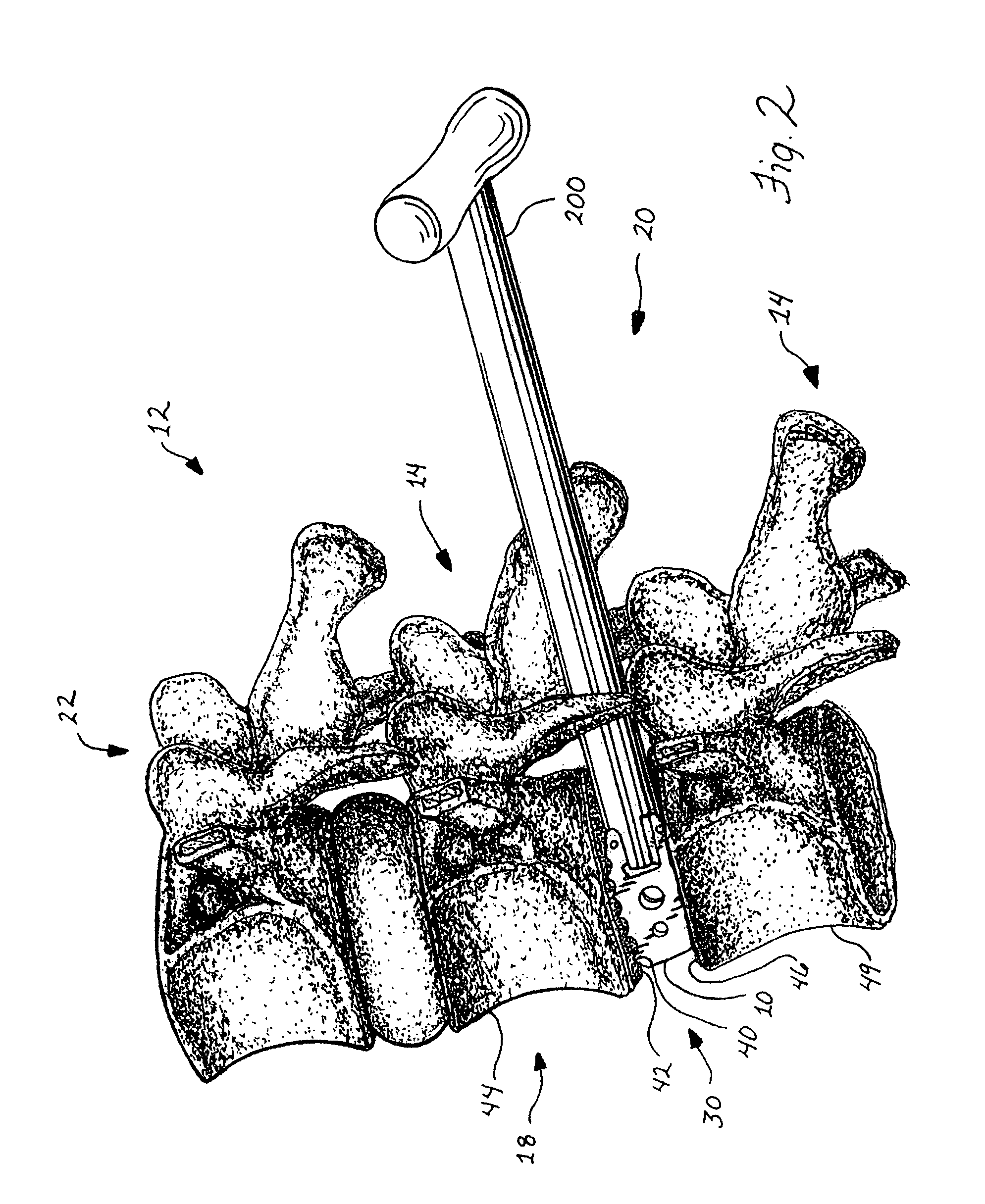Spinal stabilization device and methods
a stabilization device and spine technology, applied in the field of spinal stabilization devices and methods, can solve the problems of spinal damage, disease or deformity, impingement on the spine, loss of brain and organs or limbs,
- Summary
- Abstract
- Description
- Claims
- Application Information
AI Technical Summary
Benefits of technology
Problems solved by technology
Method used
Image
Examples
Embodiment Construction
[0053]Referring initially to FIGS. 1 and 2, a vertebral body replacement device or implant 10 for spinal fusion surgery is represented as being inserted within a spinal column 12. The spinal column includes a series of vertebrae 14 and spinal discs 16 located between adjacent vertebrae 14. The spinal column 12 has an anterior side 18 and a posterior side 20 wherein the vertebrae 14 include a portion 22 on the posterior side 20 in which the spinal cord (not shown) is located.
[0054]In FIGS. 1 and 2, the implant 10 is shown being inserted from a posterior side 20 into an intervertebral space 30. Through the lumbar region of the spine 12, access to the intervertebral space 30 from the posterior side 20 avoids needing to go through the abdomen, which would require a general surgeon. In the cervical region (not shown) of the spine 12, it is preferred to access the spine 12 from the anterior side 18, principally due to the curvature of the cervical vertebrae. An implant 500 for use in the ...
PUM
 Login to View More
Login to View More Abstract
Description
Claims
Application Information
 Login to View More
Login to View More - R&D
- Intellectual Property
- Life Sciences
- Materials
- Tech Scout
- Unparalleled Data Quality
- Higher Quality Content
- 60% Fewer Hallucinations
Browse by: Latest US Patents, China's latest patents, Technical Efficacy Thesaurus, Application Domain, Technology Topic, Popular Technical Reports.
© 2025 PatSnap. All rights reserved.Legal|Privacy policy|Modern Slavery Act Transparency Statement|Sitemap|About US| Contact US: help@patsnap.com



